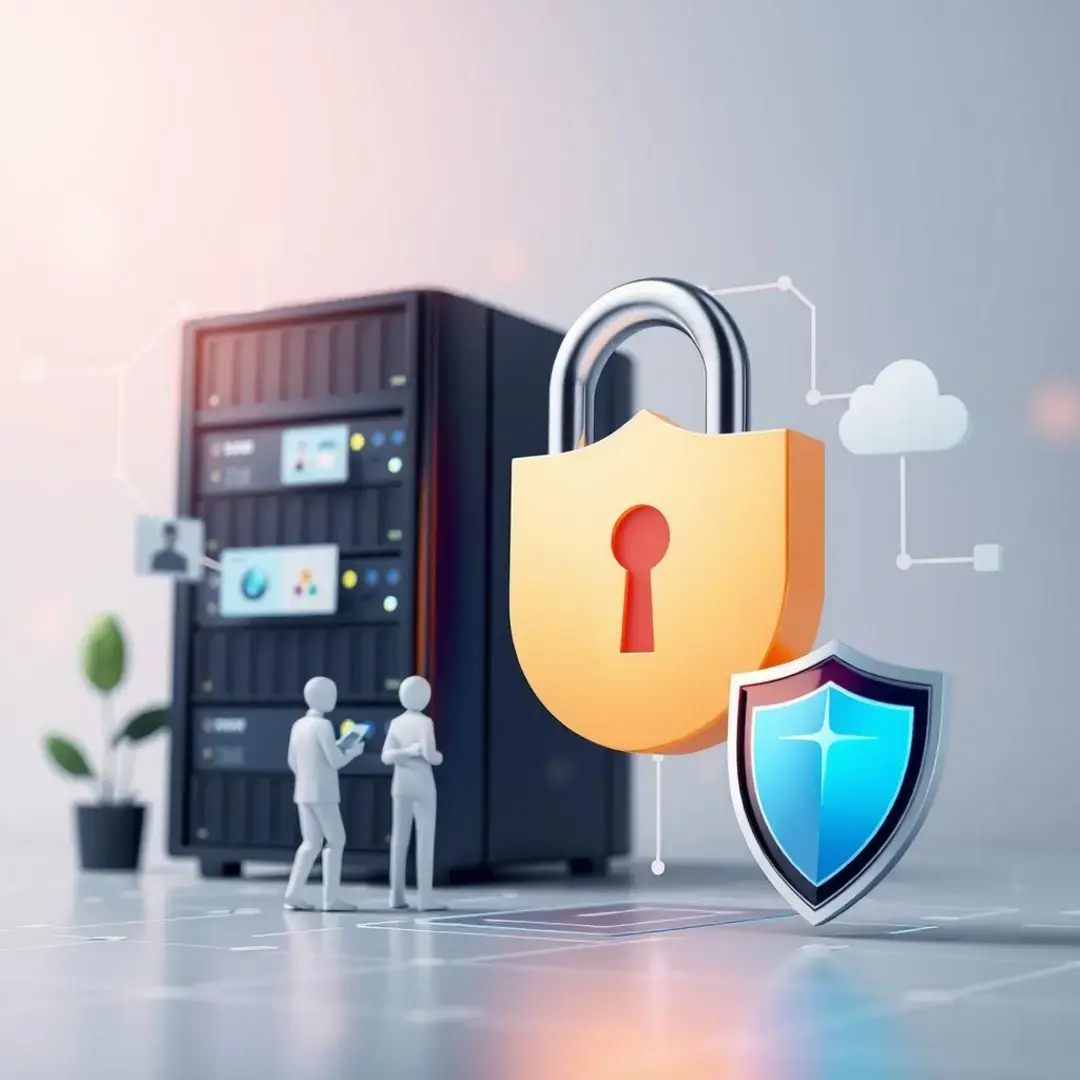Securing Confidential Information of Business Partners
Understanding the Importance of Partner Security

Why Protecting Partner Data Matters
In an era of increasing data breaches and cyber-attacks, protecting partner data has become more critical than ever. When businesses collaborate, they often share sensitive information, which can significantly impact their respective operations if compromised. The consequence of a data breach can result in lost business opportunities, a damaged reputation, and strained relationships. Moreover, the ripple effect of such incidents often extends beyond immediate stakeholders.
Data breaches not only affect the victimized business but can also jeopardize the trust and rapport built between partners. When one company’s information is compromised, it can lead to skepticism and paranoia about the integrity of the partnership. Understanding the implications of these breaches is crucial, as they can derail years of business collaboration and negotiation.
Businesses are also bound by various legal and regulatory frameworks that mandate the protection of confidential data. Failure to adhere to these regulations can lead to significant penalties, further emphasizing the importance of data security. It’s imperative to understand these obligations and ensure compliance not only to avoid legal consequences but to foster a culture of accountability and responsibility.
Trust is an invaluable asset in any business relationship. When companies demonstrate a commitment to safeguarding their partners’ information, they actively enhance their reputation in the market. This trust facilitates smoother transactions and enhances collaboration, paving the way for future opportunities. A robust security posture reassures partners that their information is in safe hands.
Identifying Potential Vulnerabilities
Recognizing potential vulnerabilities is the first step in safeguarding sensitive information. An effective security strategy must begin with a thorough assessment of existing data-sharing processes. Identifying weak links in these processes can help businesses shore up their defenses against unauthorized access and data leaks.
Organizations should carefully analyze how confidential information is shared and stored. A detailed risk assessment will help pinpoint areas that may expose them to data breaches. By scrutinizing both internal and external communication channels, businesses can better understand their risk landscape and implement appropriate measures.
It is essential to assess the security protocols of any partners involved in the exchange of sensitive information. If a partner has lax security measures, it increases the risk for your business. Therefore, establishing security standards for third-party vendors can help ensure that sensitive information remains protected at all times.
Insider threats are often overlooked during security assessments, yet they represent a significant risk. Employees may have access to sensitive data, and a lack of supervision or control can lead to unintentional or intentional breaches. Implementing strict access controls and monitoring user activities can lessen the risks presented by insiders.
Implementing Robust Security Measures

Establishing a Secure Data Sharing Framework
Creating a secure data-sharing framework is imperative for any partnership. One of the best practices is to implement strong encryption protocols that protect data during transit and at rest. This prevents unauthorized access and ensures that even if data is intercepted, it cannot be deciphered by malicious entities.
Encryption serves as the first line of defense for data in transit. By employing reliable encryption standards, businesses can protect their sensitive information from cybercriminals. Moreover, this practice adds an additional layer of security, reassuring partners about the safety of their data.
Another essential component of a secure data-sharing framework is the utilization of secure file transfer mechanisms. Protocols such as SFTP (Secure File Transfer Protocol) or HTTPS should be utilized to ensure that files are shared securely. These methods make it difficult for unauthorized individuals to intercept or manipulate the data being exchanged.
Multi-factor authentication (MFA) is a crucial security measure that reinforces access controls. By requiring additional verification from users attempting to access sensitive data, organizations can significantly reduce the likelihood of unauthorized access. Implementing MFA can often serve as a deterrent against potential attackers.
Developing a Comprehensive Security Policy
A thorough and well-crafted security policy forms the backbone of any data protection strategy. This policy should encompass various aspects of data management, including access controls, data handling procedures, and incident response protocols. Having a structured approach to security allows businesses to maintain consistency across their operations.
Access control is critical in determining who can view or manipulate sensitive information. Clearly defining which employees or partners have access to specific datasets can help mitigate the risks of data breaches. Ensuring that these policies are regularly reviewed and updated is equally important to adapt to changing circumstances or new threats.
Data loss prevention (DLP) strategies are essential in identifying and preventing potential data breaches. These strategies can include monitoring data transfers in real-time, setting up alerts for abnormal activities, and educating employees on data handling practices. By proactively managing data assets, organizations can effectively minimize risks associated with data loss.
Conducting regular audits of security practices helps organizations identify weaknesses and areas for improvement. Regular checks will help ensure that the security measures in place remain effective against evolving threats. Such audits also provide an opportunity to measure compliance with industry regulations and standards.
Training and Education for Employees and Partners
Awareness and education form a fundamental aspect of any security strategy. Employees and partners should be well-informed about security best practices to act as the first line of defense against data breaches. Providing comprehensive training will empower them to recognize potential threats and respond appropriately.
Regularly sharing information about the latest security trends and threats can help keep partners and employees informed. Building a culture of awareness can significantly enhance an organization’s security posture and encourage proactive behavior towards preventing data breaches. A well-informed workforce is crucial in safeguarding sensitive information.
Investing in regular security training programs can help reinforce the importance of safeguarding confidential data. Providing practical examples and case studies during these training sessions allows attendees to understand the ramifications of data breaches in real-world scenarios. Continuous learning and adaptation are essential in the ever-evolving landscape of cybersecurity.
Creating dynamics for open communication about security incidents is paramount. Employees and partners should feel comfortable reporting suspicious activities without fear of retribution. Clear communication channels can facilitate rapid incident detection and remediation, significantly reducing the potential impact of a data breach.
Advanced Security Strategies for Enhanced Protection

Leveraging Advanced Threat Detection Tools
Employing advanced threat detection tools can significantly bolster an organization’s security framework. Technologies such as intrusion detection and prevention systems (IDPS) actively monitor network traffic for suspicious activities and can help mitigate risks in real-time. These tools not only identify potential threats but also provide actionable insights that empower security teams.
Intrusion detection systems (IDS) monitor networks for unauthorized access and report irregularities. By combining IDS with prevention measures, organizations can create a proactive security environment that anticipates threats. These systems serve as an essential part of a comprehensive security strategy and can provide peace of mind to both partners and stakeholders.
SIEM solutions offer a centralized approach to security management by aggregating data from various sources, such as applications, network devices, and servers. This analysis can provide real-time monitoring and high-level visibility into potential threats. By implementing SIEM solutions, organizations can act quickly and decisively to mitigate risks.
Integrating threat intelligence platforms into security strategies can enhance an organization’s ability to combat evolving threats. These platforms aggregate threat data and provide context, helping organizations to stay ahead of potential attacks. As part of a broader strategy, they ensure that businesses maintain robust defenses against ever-changing threats.
Zero Trust Security Model for Partner Access
The Zero Trust Security Model shifts the focus from traditional perimeter security to a more granular approach, demanding verification for every user attempting to access resources. Under this model, trust is never assumed, and every interaction is treated with caution. This can significantly mitigate the risks posed by external and internal threats.
Microsegmentation involves dividing networks into smaller, isolated segments to limit access and minimize potential breaches. By employing microsegmentation, organizations can enforce strict access controls at a granular level. This strategy not only improves security but also enhances compliance with data protection regulations.
Continuous authentication requires validating user identities throughout the session rather than just at the point of entry. This ongoing verification adds another layer of security, particularly for sensitive data. As user and system behaviors evolve, continuous authentication can dynamically adjust access rights to ensure safe environments.
By continuously monitoring the network and applying rigorous access controls, organizations can effectively minimize their attack surface. This involves regular updates of software and hardware, removing unnecessary services, and employing rigorous patch management. Reducing the attack surface is an ongoing process that requires vigilance and a proactive stance.
Incident Response and Recovery Planning
No security measure is foolproof, which is why having a comprehensive incident response plan is crucial. Organizations must be ready to respond promptly to any data breach or security incident. This means outlining clear steps for containment, eradication, and recovery to minimize the impact of security breaches.
A detailed incident response plan should outline immediate actions to take upon discovering a breach, as well as designating roles and responsibilities for response teams. Regularly revisiting and updating this plan allows organizations to ensure their response strategies are current and effective. This preparation can make a substantial difference in managing a crisis effectively.
Effective communication during an incident can greatly enhance the overall response efforts. Clearly defined communication protocols ensure that all stakeholders are informed and aligned throughout an incident. This transparency helps maintain trust among partners and minimizes misinformation during a crisis.
To ensure that an incident response plan remains effective, organizations should regularly conduct drills and simulations. Testing the plan allows stakeholders to identify any gaps and make appropriate adjustments before a real incident occurs. Continuous improvement of these plans is essential in adapting to evolving threats and challenges.












